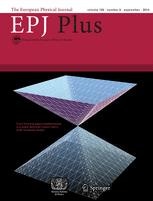Feb 28 2017
 (Credit: Springer)
(Credit: Springer)
The nanometric-size islands of magnetic metal spread at irregular intervals between vacuum gaps exhibit unique conductive properties under a magnetic field.
In a new study published in EPJ Plus, Anatoliy Chornous from Sumy State University in Ukraine and colleagues discovered that the vacuum gaps hamper the direct magnetic alignment between the neighboring islands - which relies on the external magnetic field - while allowing electron tunneling between them.
This sort of externally controlled conducting behavior paves the way for applications in electronics using magnetic field sensors - which are utilized to read data on hard disk drives - microelectromechanical and biosensors systems (MEMS), as well as in spintronics with magnetic devices used to expand memory density.
At the quantum scale, materials characterized by thin-film structures comprising of alternating magnetic and non-magnetic layers act in a way that creates an effect referred to as the Giant Magnetoresistance (GMR) effect. Albert Fert and Peter Grünberg won the 2007 Nobel Prize in Physics for this discovery. In this research, the authors analyzed iron islands of between 10 nm and 30 nm as well as cobalt islands of between 5 nm and 25 nm.
They discovered that the highest values of the electric conductivity under an external magnetic field are acquired when the islands have a width of between 3 nm and 5 nm, with vacuum barriers of between 1 nm and 3 nm between them. However, they also noticed that the tunneling of electrons between the islands relied upon the relative orientation of the direction of magnetization in the neighboring islands and on the external magnetic field.
In addition, they established that the electric conductivity is at a maximum when the magnetic moments in the neighboring granules are oriented in parallel, which results in the tunnel magnetoresistance effect (TMR). The value of the TMR fundamentally depends on the insulator material’s interface properties between those islands.
Reference:
A.M. Chornous, Yu.O. Shkurdoda, V.B. Loboda, Yu.M. Shabelnyk and V.O. Kravchenko (2017), Influence of the surface morphology on the magnetoresistance of ultrathin films of ferromagnetic metals and their alloys, Eur. Phys. J. Plus 132:58, DOI 10.1140/epjp/i2017-11327-x